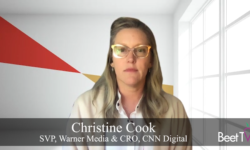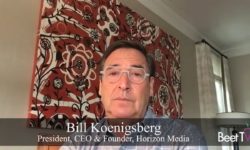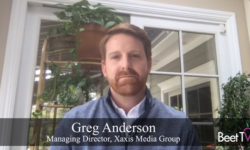In the era of social distancing, avoidance may be the order of the day.
But that shouldn’t be the case when it comes to advertising against news.
Interpublic’s UM Worldwide has become the latest agency in a procession of industry players to counsel advertisers against blacklisting news publishers during the COVID-19 pandemic.
In this video interview with Beet.TV, UM’s chief digital and innovation officer Joshua Lowcock explains: “News is absolutely, categorically a brand-safe environment to be. There is no reason to avoid news and say that it’s not brand-suitable.
“The notion that you should somehow avoid negative news is, I think, a dangerous path to play because … it’s a slippery slope and you can’t ever win that debate. What’s negative to one person might not be negative to another.
“In the research that we’ve done, no one blames a brand for COVID-19 or coronavirus or a negative news event.”
The rush to block
From the early stages of the pandemic, many advertising buyers began using “brand safety” tools in ad-buying platforms to swerve ad opportunities against coronavirus-related content, or simply stopped advertising in news altogether.
That comes as publishers struggle to cope with a large-scale advertising drop-off that has pushed many farther to the brink of survival.
Even as the likes of Comscore launched an “epidemic brand safety filter” to help advertisers dodge types of virus news, IAB president David Cohen published an IAB article, How Brands and Agencies Can Save American Lives in The Coronavirus Crisis, urging an end to the practice.
Publishers’ group Digital Content Next also wrote a letter to marketers and ad verification companies asking them to exempt premium, trusted media companies from COVID-19 brand safety filters.
Safe versus suitable
For UM Worldwide’s Lowcock, when it comes to ad inventory, there is a difference between “brand safety” and “brand suitability”.
“I think brand safety is well-defined … it’s advertising or sponsoring content that encourages hate, violence or misinformation,” he explains.
“I think (brand) suitability is less well-defined. The industry needs to evolve a little bit and stop seeing brand suitability as yet another avoidance strategy.
“If you’re marketing or advertising a certain product or service and it’s not empathetic to the environment that you’re in, that’s really the brand suitability crux or nexus of the issue that you need to resolve and that’s what’s come to light in this present time that we’re in.”
Adjust creative
Results of a survey published recently by Utzschneider’s IAS show:
- 58% of users are actively seeking out coronavirus news.
- 78% say their sentiment toward a brand placed in coronavirus news remains unchanged.
- But consumers believe the suitability of that placement depends on the brand.
- They have greater demand for messaging from health, pharmaceutical and government communicators.
- Travel and food-and-beverage ads are the biggest turn-offs for consumers right now.
So Lowcock is amongst the agency executives urging advertisers – stay in news, but recalibrate your messaging.
“If anything, the learning from this moment, regardless of advertising category is, be appropriate with your messaging and have the right creative that is appropriate to the times and the environment.
“Make sure that your creative is right and your creative is empathetic and sensitive, then it will be more than likely be brand-suitable.”
Salvation from context
Lowcock thinks smart tagging of the real meaning of content can help the industry get there.
“Where we hope tools will go is beyond being blunt-force objects and more so contextual and sentiment analysis because that’s where you can actually be much more intelligent and misconstruing what a word means and the actual context would go away.
“So you’d take a word like ‘shooting’ – from shooting a goal to shooting a human being, you actually know what the differential is between them and go, ‘Okay, one is a good place to be. It’s safe to be. The other one, I need to know a bit more detail or adjust my messaging if I’m going to be in that environment’.”
Production Note: The backdrop in this video is an image of the UM conference room. This video was produced remotely at Joshua’s home.
This video is part of a series titled Brand Suitability at the Forefront, presented by Integral Ad Science. For more segments from the series, please visit this page.








































